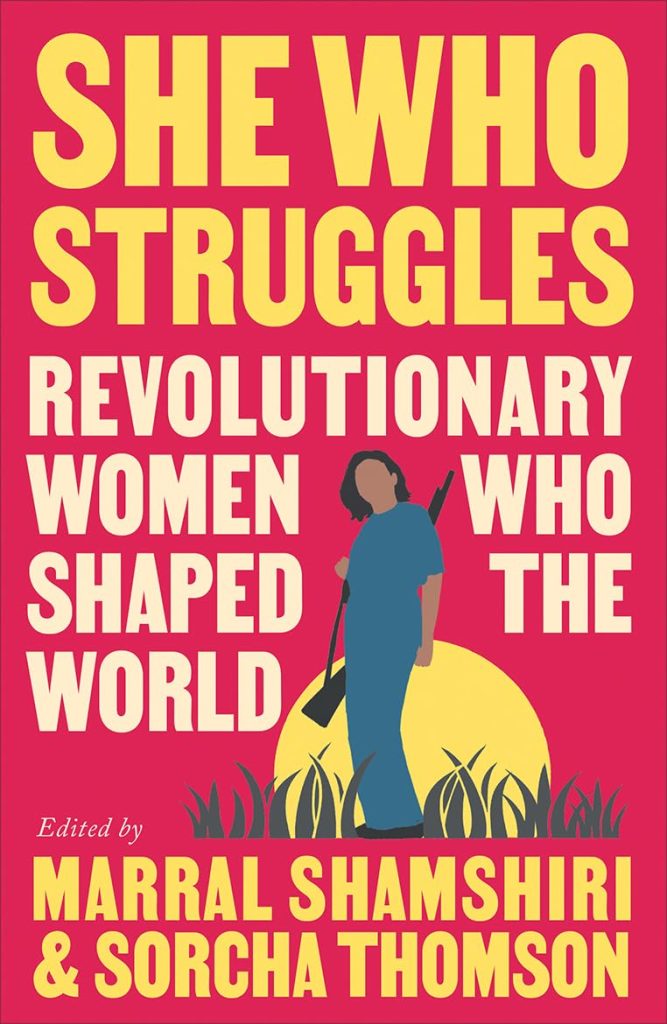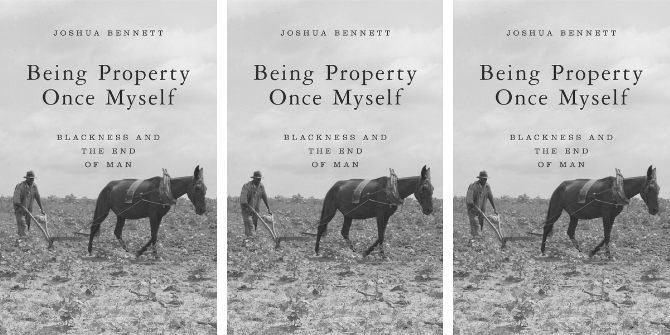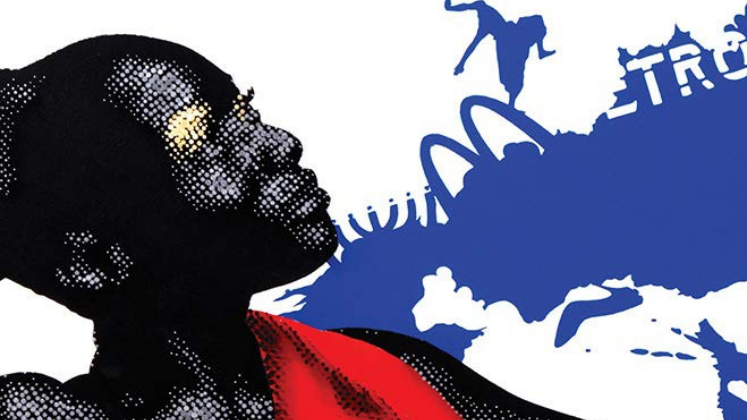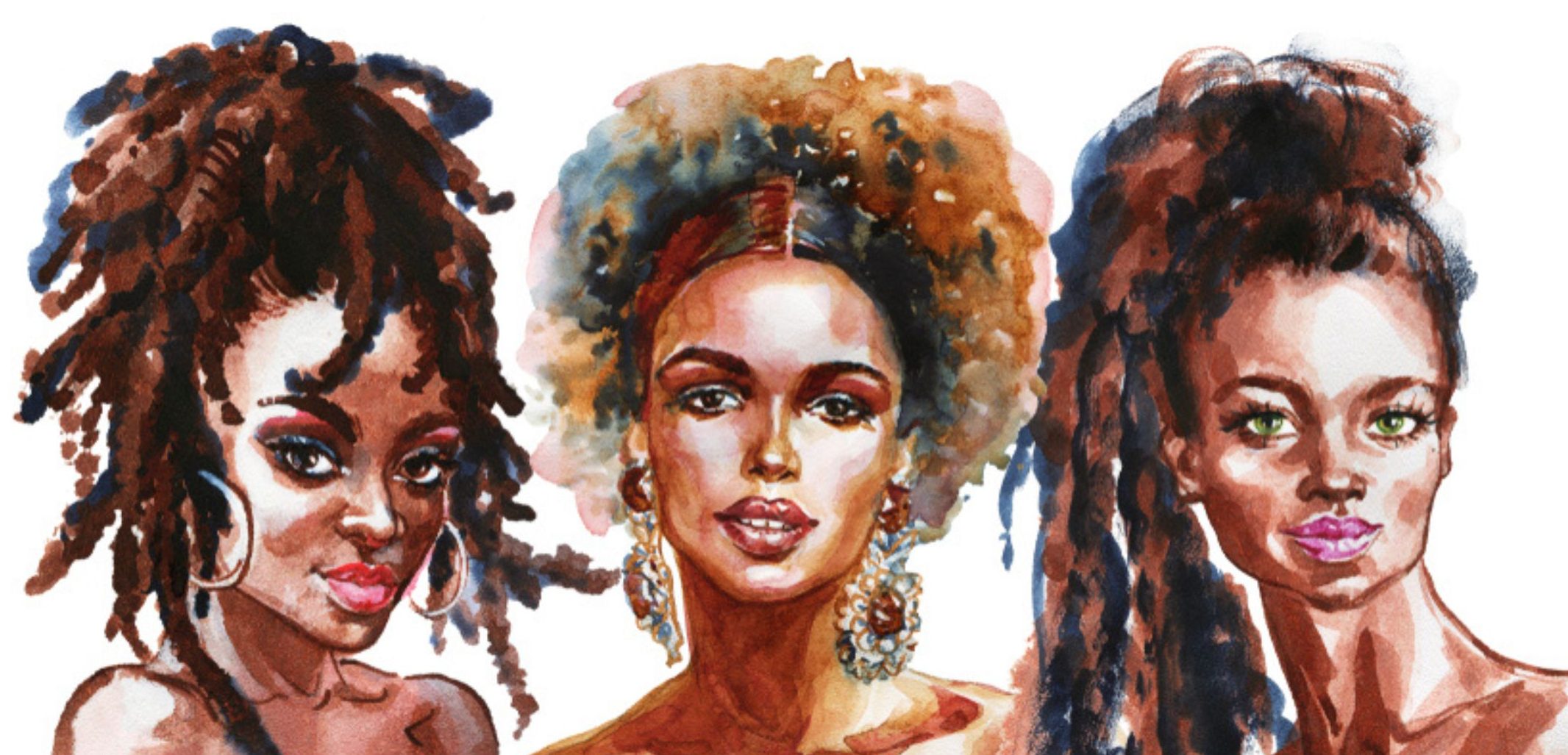In She Who Struggles, Marral Shamshiri and Sorcha Thomson compile a selection of essays about women’s (often overlooked) contributions to revolutionary causes around the world, with particular focus on the Global South. According to Lydia Hiraide, the book is an accessible and stimulating read exploring the role of women and feminist thought in building transnational and anti-colonial and social movements.
 As the title of Marral Shamshiri and Sorcha Thomson’s edited collection affirms, revolutionary women have shaped our world in various ways. This collection of thirteen chapters pays homage to the militant efforts of women revolutionaries whose efforts are often underacknowledged in the dominant narratives of historical and contemporary revolutionary movements. Each chapter is dedicated to one or more women and/or the movements in which they participated, providing space for their stories to be told and for scholars, activists, and students to learn from them.
As the title of Marral Shamshiri and Sorcha Thomson’s edited collection affirms, revolutionary women have shaped our world in various ways. This collection of thirteen chapters pays homage to the militant efforts of women revolutionaries whose efforts are often underacknowledged in the dominant narratives of historical and contemporary revolutionary movements. Each chapter is dedicated to one or more women and/or the movements in which they participated, providing space for their stories to be told and for scholars, activists, and students to learn from them.
Each chapter illuminates an example of radical grassroots politics with a fiery militant edge, focusing particularly on the Global South.
This book strikes a tone which departs from the various forms of ‘Lean In’ liberal feminisms, which remain common across the Global North. Each chapter illuminates an example of radical grassroots politics with a fiery militant edge, focusing particularly on the Global South. The movements and histories that the contributors celebrate highlight women’s leadership and deep personal sacrifice in revolutionary movements, paying tribute to women who have lost their lives and loved ones in the struggle for liberation. Maurice J. Casey’s chapter focuses on Mary Mooney, a working-class Irish woman whose campaign for the liberation of political prisoners sprang from the imprisonment of her son, trade unionist Tom Mooney. What started as a personal experience of state violence for Mooney grew into a transnational campaign across the African and Irish diaspora, joining up with the campaigners and mothers of the Scottsboro boys. These stories remind us that the personal losses of women can spur the genesis of transnational solidarity.
In relation to violence, women are not only its victims; they have also been its agents.
But, in relation to violence, women are not only its victims; they have also been its agents. Jeremy Randall’s chapter on Japanese communist Shigenobu Fusako and the Japanese Red Army (JRA) invites us to reflect on women’s capacity for violence in revolutionary settings. Shigenobu, who started out as a student activist, was militant in her commitment to the liberation of all peoples – and particularly, the people of Palestine. She and the JRA in fact relocated to Palestine as a key site from which to foment revolution, in collaboration with organisations such as the Popular Front for the Liberation of Palestine. Under Shigenobu’s leadership, the JRA exploited “violence as a revolutionary tactic” (83). This is, of course, an approach which invites fundamental questions around the legitimacy of violence in the face of violence. Scholarship on the lives and work of figures like Shigenobu Fusako thus grapple with some of the key problematics at the heart of revolutionary political thought and practice. Such is the essence of the burning questions raised by other thinkers and activists, like Frantz Fanon, whose work and life addressed such themes in the context of colonial Algeria.
Chapters explore, for example, the active solidarity of figures like Madame Bình and Madame Nhu in Vietnam, Palestine and Iran as well as Shigenobu Fusako and the JRA across North Korea, Palestine, and Japan. These women’s histories remain startlingly relevant in today’s world
Though each chapter focuses on a different woman or women in their respective geographical and temporal contexts, several clear themes emerge throughout the book. Firstly, the exploration of women revolutionaries, past and present, affirms the central, rather than tangential, importance of women’s politics to nurturing and developing a revolutionary Left politics. Secondly, the book speaks back to dominant narratives which erase the names of women revolutionaries. More than recognising the role of women in general in revolutionary struggle, it names specific women and recounts their contributions. By doing so, it reminds us that these women were “all autonomous people with histories, feelings, dreams, desires and families” (152), while taking their work as serious sites from which to generate political thought and emancipatory action. Thirdly, a striking majority of the chapters emphasise the power of radical transnationalism in the revolutionary efforts of women worldwide. Chapters explore, for example, the active solidarity of figures like Madame Bình and Madame Nhu in Vietnam, Palestine and Iran as well as Shigenobu Fusako and the JRA across North Korea, Palestine, and Japan. These women’s histories remain startlingly relevant in today’s world, as we witness the unfolding of tragedy, resistance and waves of solidarity with Palestinian struggles, many led by women. In this regard, Jehan Helou’s chapter, “TESTIMONY: The Power of Women’s International Solidarity with the Palestinian Revolution” demands the recognition of women’s efforts as an important force in the struggle for Palestinian liberation.
Additionally, the book offers an interesting and welcome engagement with the arts as an important medium of resistance, in particular, poetry. The chapter by Marral Shamshiri offers an articulate exploration of Marzieh Ahmadi Osku’i’s poetry across the contexts of Iran, Afghanistan and India. Shamshiri examines poetry’s permanence in the context of life’s precarity and impermanence: the words of women poets live on in revolution, even when they themselves do not. This chapter is one of several that reminds us that “[f]or women, poetry is not a luxury,” but rather, “a vital necessity for our existence” and resistance. Kebotlhale Motseothata’s chapter “Lindiwe Mabuza: Culture as a Weapon of Resistance in South Africa” likewise deals with poetry and the arts as crucial instruments used in the struggle against Apartheid. Motseothata affirms the creative, visionary ways in which women have articulated the pain, struggle, and politics they face in living and resisting the intersections of racial capitalism and patriarchy.
This important book undertakes the vital work of recording and examining the contributions of women revolutionaries, whose stories are too often obscured in the mainstream imaginary
Overall, this is an exciting, informative and timely book. The chapters are relatively short and self-contained, making them ideal materials to assign in politics or history courses exploring ideas around revolution, feminism, anti-colonialism and transnational social movement organising. They are written clearly and dynamically, allowing complex themes and histories to be explored in an intellectually stimulating and accessible way. This important book undertakes the vital work of recording and examining the contributions of women revolutionaries, whose stories are too often obscured in the mainstream imaginary.
Note: This review gives the views of the author, and not the position of the LSE Review of Books blog, or of the London School of Economics and Political Science.
Image credit: thomas koch on Shutterstock







